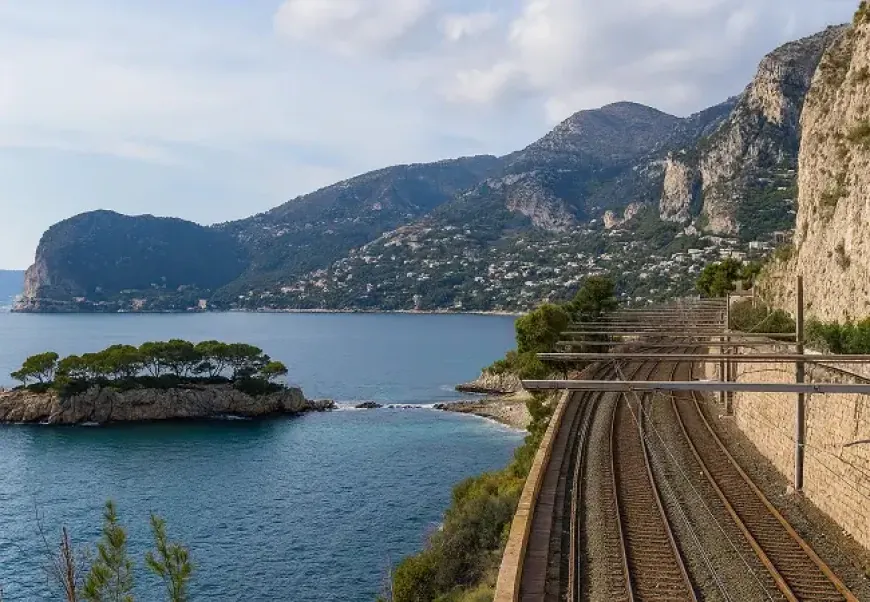Nice-Monaco-Vintimiglia Metro: €4 Billion Project Divides
The €4 billion Nice-Monaco-Vintimiglia metro promises a 23-minute journey. Explore the project, supporters, opposition, and TER alternatives.

The Federation of Monegasque Businesses (FEDEM) has relaunched the debate on a 30-kilometer cross-border metro linking Nice Airport to Ventimiglia via Monaco, with an estimated cost of €4 billion. Promising a 23-minute journey between Nice and the Principality, the project has garnered enthusiasm from business leaders and certain elected officials but faces caution from the Monegasque government and opposition from Éric Ciotti, who favors a fiscal alternative in the Plaine du Var.
Updated on October 1, 2025
An Unsustainable Mobility Crisis
Every day, approximately 50,000 people commute in and out of Monaco, facing road and rail congestion that FEDEM president Philippe Ortelli describes as an "economic, ecological, and human absurdity." Journey times can reach one and a half hours, to the point where 77% of Monegasque companies report job candidates declining positions due to transport difficulties. For Franco-Monegasque business leaders, the urgency is clear: launch a large-scale feasibility study for a modern, electric, automated cross-border metro.
Project Details: Performance and Route
A Next-Generation Automated Metro
The FEDEM-backed project relies on approximately 30 kilometers of underground infrastructure, designed to minimize disruption and avoid property expropriations through tunnels bored at depths exceeding 50 meters. The driverless metro would operate 24/7 at speeds of 60 km/h, with 5-minute frequencies during peak hours. Financial amortization is planned over one century.
Proposed route (12 stops):
- Nice Airport
- Allianz Riviera
- Nice Nord
- Pasteur
- Fontvieille (Monaco)
- Sainte-Dévote (Monaco)
- Monte-Carlo (Monaco)
- Saint-Roman (Monaco)
- Carnolès
- Ventimiglia (Italy)
Drastically Reduced Travel Times
The metro would connect Nice Airport to Monaco in just 23 minutes, compared to 1.5 hours by car during rush hour. Access from eastern Nice would take only 11 minutes. The proposed fare is around €10, less than the combined costs of fuel, tolls, and parking. The extension to Ventimiglia aims to tap into an underutilized Italian labor pool and provide cross-border real estate opportunities.
A Political Fault Line Between Advocates and Skeptics
The Support Front
The project enjoys broad business backing: FEDEM and the Union of Businesses of Alpes-Maritimes (UPE06) deem it essential for regional economic attractiveness. Philippe Ortelli has won over political figures including Thomas Brezzo, president of Monaco's National Council, and Christian Estrosi, president of the Nice Côte d'Azur Metropole. Alexandra Masson, RN deputy for the Menton constituency, views it as a "lasting solution" and an "example of international cooperation" for the 60,000 French and Italian workers who commute daily.
Caution from the Monegasque Government
Christophe Mirmand, Monaco's Minister of State, adopts a measured stance. He emphasizes that €4 billion represents a "very significant sum" for the Principality and notes that, to his knowledge, no comprehensive techno-economic study has been commissioned. According to him, the economic model must be "sustainable" before any financial commitment.
Éric Ciotti's Opposition and Alternative
Éric Ciotti, UDR-RN candidate for Nice, deems the metro "very costly" and unachievable for "many years." He proposes an alternative strategy: create a free zone in the Plaine du Var to attract Monegasque employment by applying Monaco's social and tax laws, thereby reducing commuter flows without heavy infrastructure.
The Rail Reality: Ongoing TER Modernization
Region-Principality Collaboration
The Sud Region and Monaco are working together to improve TER service on the Nice-Ventimiglia line, notably by adjusting S
NCF maintenance schedules. A new plan negotiated in September 2024 guarantees train service until 10 p.m. (instead of 9 p.m.) and suspends works during major events such as Champions League matches.
Enhancements Starting December 2024
As of December 15, 2024, the TER line between Nice and Ventimiglia will see frequency increased to one train every 15 minutes between 6 a.m. and 10 p.m. The Monegasque government is financing the purchase of two high-capacity TER trains, deliverable in late 2027, to accommodate growing traffic. SNCF has committed to reducing its cancellation rate to 0.25% in 2025, down from 5.2% in August 2024.
| Mode | Nice-Monaco Time | Indicative Cost | Frequency | Reliability |
|---|---|---|---|---|
| Car | 1.5 hrs (peak) | €15–20/day (fuel + toll + parking) | Continuous | Variable (congestion) |
| Current TER | 25–35 min | €5–8 | 15 min (from Dec. 2024) | 94.8% (Aug. 2024) |
| Planned metro | 23 min | ~€10 | 5 min (peak) | [to be verified] |
What Changes For Commuters and Economic Stakeholders
For the 50,000 daily commuters, the metro would represent substantial time savings (up to 1 hour per journey) and increased predictability. Monegasque businesses hope to expand their recruitment pool to Ventimiglia and western Nice while reducing absenteeism related to transport disruptions. Environmentally, the modal shift from car to metro could reduce CO₂ emissions and air pollution on the A8 highway and lower corniche road.
Context and Stakes
The Nice-Monaco-Ventimiglia metro project has resurfaced regularly since 2022, championed first by Christian Estrosi then by Philippe Ortelli. It illustrates the tension between economic ambition and budgetary realism in a compact yet prosperous territory. Monaco, the world's second-most densely populated state after Singapore, suffers from near-total dependence on cross-border labor. The Italian extension aims to diversify the employment basin and anticipate saturation of the Franco-Monegasque labor market.
At the European level, such a tri-national project (France, Monaco, Italy) could qualify for subsidies from the Connecting Europe Facility (CEF), provided it clears the crucial techno-economic feasibility study stage. Philippe Ortelli cites the Lausanne metro and Switzerland's 52 kilometers of Alpine tunnels as examples demonstrating that a project of this magnitude is technically achievable.


 TrainsNews
TrainsNews 





